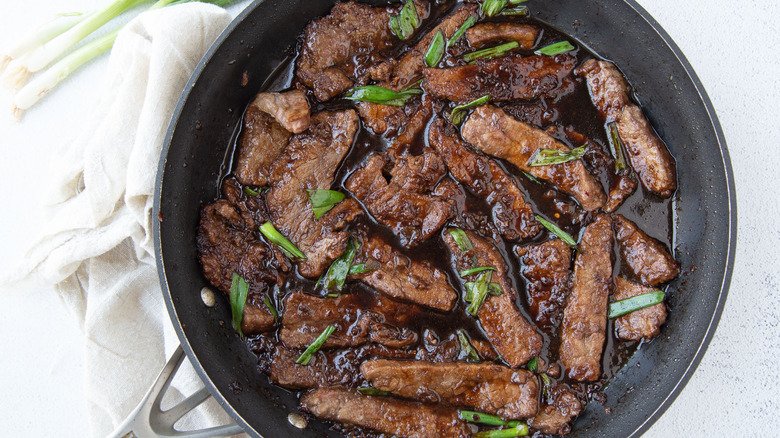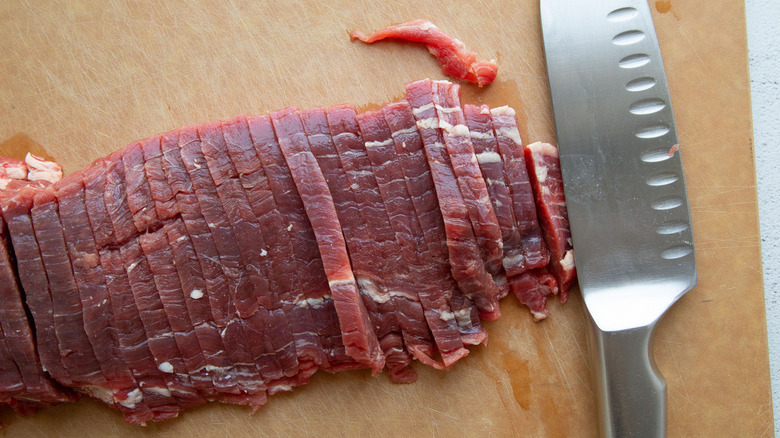What Kind Of Steak Should You Use For Mongolian Beef?
If you want to make Mongolian "beef" that would actually taste like something Genghis Khan and his Golden Horde might have chowed down on, you would probably need to source goat, mutton, or maybe even horse meat. (Although horse, for the Mongol hordes, was more of a desperation measure since the animals were more valuable as mounts than meat.) Assuming you want "Mongolian" beef instead, meaning that dish created by a Taiwanese comedian in the early '50s and popularized by all-you-can-eat American buffets, then you're probably going to want steak.
Recipe developer Kate Shungu's take on Mongolian beef was inspired by an American chain restaurant, as she tells us that the finished dish "tastes just like P.F. Chang's." Her choice of beef is flank steak, which is a cheap(ish) cut that can be a bit tough but works just fine in dishes like fajitas, stir-fries, and, yes, Mongolian beef. While Shungu doesn't marinate the meat, she does "velvet" it by coating it in cornstarch before frying it in hot oil. This Chinese cooking technique doesn't actually break down the meat's proteins, but coats it to seal in the juices and thus results in meat that is still pretty tender.
For truly tender beef, you may want to marinate
One of the benefits of Shungu's Mongolian beef recipe is that it is fairly quick and easy to make as it requires just eight to nine minutes of cooking time. If you're concerned that velveting alone won't sufficiently tenderize a tough flank steak, there are two routes you can go. One is to use a more well-marbled cut of meat such as top sirloin, ribeye, or even the fabled filet mignon (the last-named being a mythical beast as far as most budgets are concerned). The other, and likely cheaper, route, however, is to marinate the meat first, a step that is called for in many Mongolian beef recipes.
Jet Tila, host of the Food Network show "In the Kitchen With Jet Tila," shares what he describes as a method used by Chinese restaurants: He marinates his flank steak for a few hours in a mixture of baking soda, cornstarch, salt, oil, and water. As he explains, baking soda, while alkaline, acts to break down the meat in much the way that an acidic marinade might, while cornstarch gives the beef what he calls a "fun, kind of slippery texture." While he leaves it up to the salt alone to add flavor to the marinade, other Mongolian beef recipes include ingredients such as soy sauce and Shaoxing wine in the mix.

